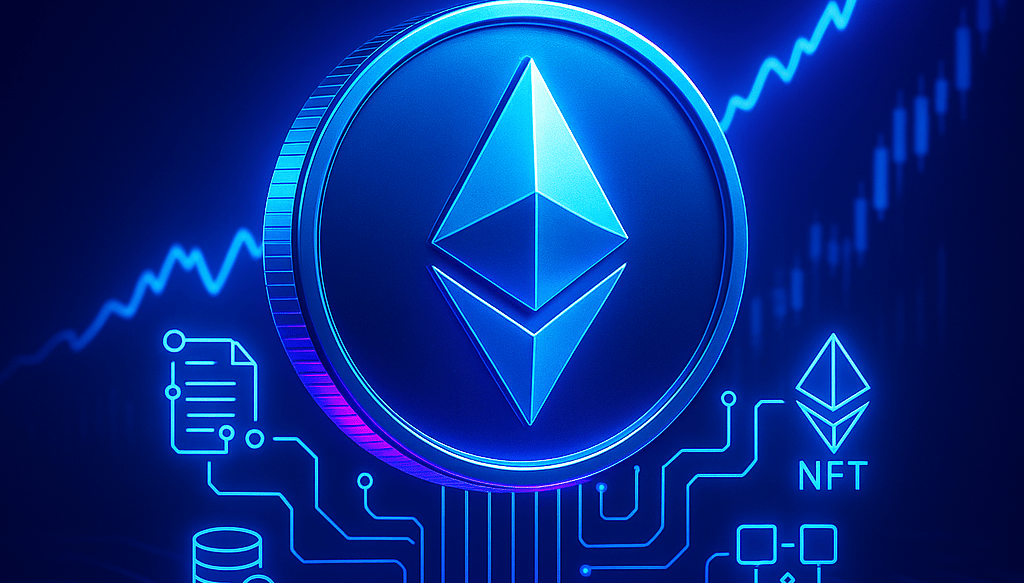Ethereum Made Simple: From Smart Contracts to Staking – A Complete and Updated Guide
Discover how Ethereum works in a clear yet technically sound way: smart contracts, dApps, staking, recent upgrades, and why demand for ETH is on the rise. Perfect for beginners and advanced enthusiasts.
GUIDES
The Blockchain In Team
8/13/20252 min read


What is Ethereum?
Ethereum is a programmable blockchain launched in 2015 by Vitalik Buterin. Unlike Bitcoin, which is primarily a digital currency, Ethereum enables the execution of smart contracts and decentralized applications (dApps), effectively acting as the operating system of Web3.
How Ethereum Works
EVM: The Engine Behind Smart Contracts
The Ethereum Virtual Machine (EVM) is the computing environment where smart contracts are executed. Every piece of code deployed on Ethereum runs through the EVM, ensuring security, immutability, and decentralization.
Gas and ETH as Fuel
Every transaction or contract execution requires a fee known as "gas," paid in Ether (ETH), Ethereum’s native currency. Gas prices fluctuate based on network demand.
Smart Contracts and dApps
Smart contracts are self-executing programs that run automatically when certain conditions are met. They power dApps such as Uniswap, OpenSea, and MakerDAO, among many others.
Ethereum 2.0 and the Transition to Proof of Stake (PoS)
From Proof of Work to Proof of Stake
In September 2022, Ethereum underwent a major upgrade known as "The Merge," shifting its consensus mechanism from Proof of Work (PoW) to Proof of Stake (PoS). This reduced energy consumption by over 99% and introduced staking capabilities for ETH holders.
How ETH Staking Works
What is Staking?
Staking involves locking up your ETH to run a validator node that helps secure the network and validate transactions. In return, you earn ETH rewards. While 32 ETH is required to run your own validator, you can also participate via staking pools or services with smaller amounts.
What's New with the Pectra Upgrade (expected in 2025)?
The upcoming "Pectra" upgrade will introduce two major changes:
Validator Consolidation: Multiple validators can be merged into a single entity, supporting balances up to 2048 ETH.
Auto-Compounding Staking: New Type 2 accounts will enable automatic reinvestment of staking rewards, boosting yield over time.
These improvements are fueling ETH demand by making staking more efficient and appealing—especially for institutional investors.
Why Ethereum Demand Is Surging
More Efficient Staking: Auto-compounding leads to exponential returns for long-term holders.
Reduced Sell Pressure: Staked ETH is locked and not circulating, lowering market supply.
Institutional Adoption: ETFs and ETH-based financial products are gaining traction.
Expanding Ecosystem: DeFi, NFTs, blockchain gaming, and stablecoins continue to rely on Ethereum infrastructure.
Final Thoughts
Ethereum is more than just a cryptocurrency—it's a dynamic, evolving platform powering the decentralized internet. With staking and upgrades like Pectra, ETH is also emerging as a source of passive income.
At The Blockchain IN, we are committed to helping professionals and businesses navigate this transformative shift. Staying informed, educated, and strategically positioned is key to unlocking the full potential of the tokenized economy. Follow us to stay ahead of the curve.
The Blockchain In
Guides, news, analysis, and investment tips on cryptocurrencies and blockchain.
CONTACT and partnership
Let us know about your experience here
hello@theblockchainin.com
© 2025. All rights reserved. Privacy Policy | Terms and Conditions | Cookie Policy | Disclaimer
about us
About
Contact